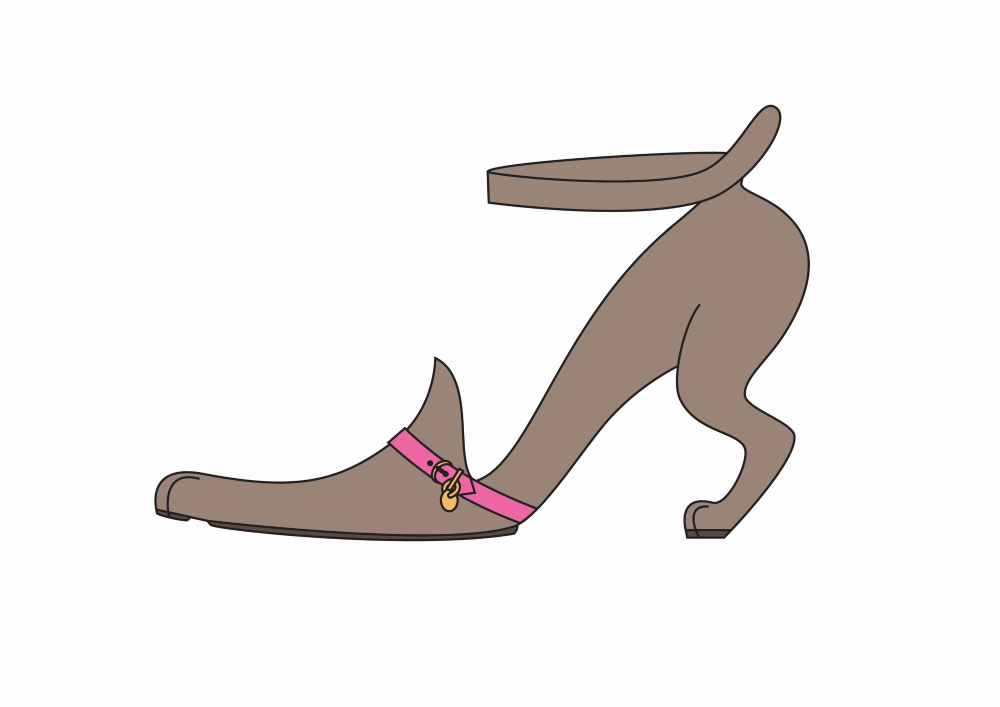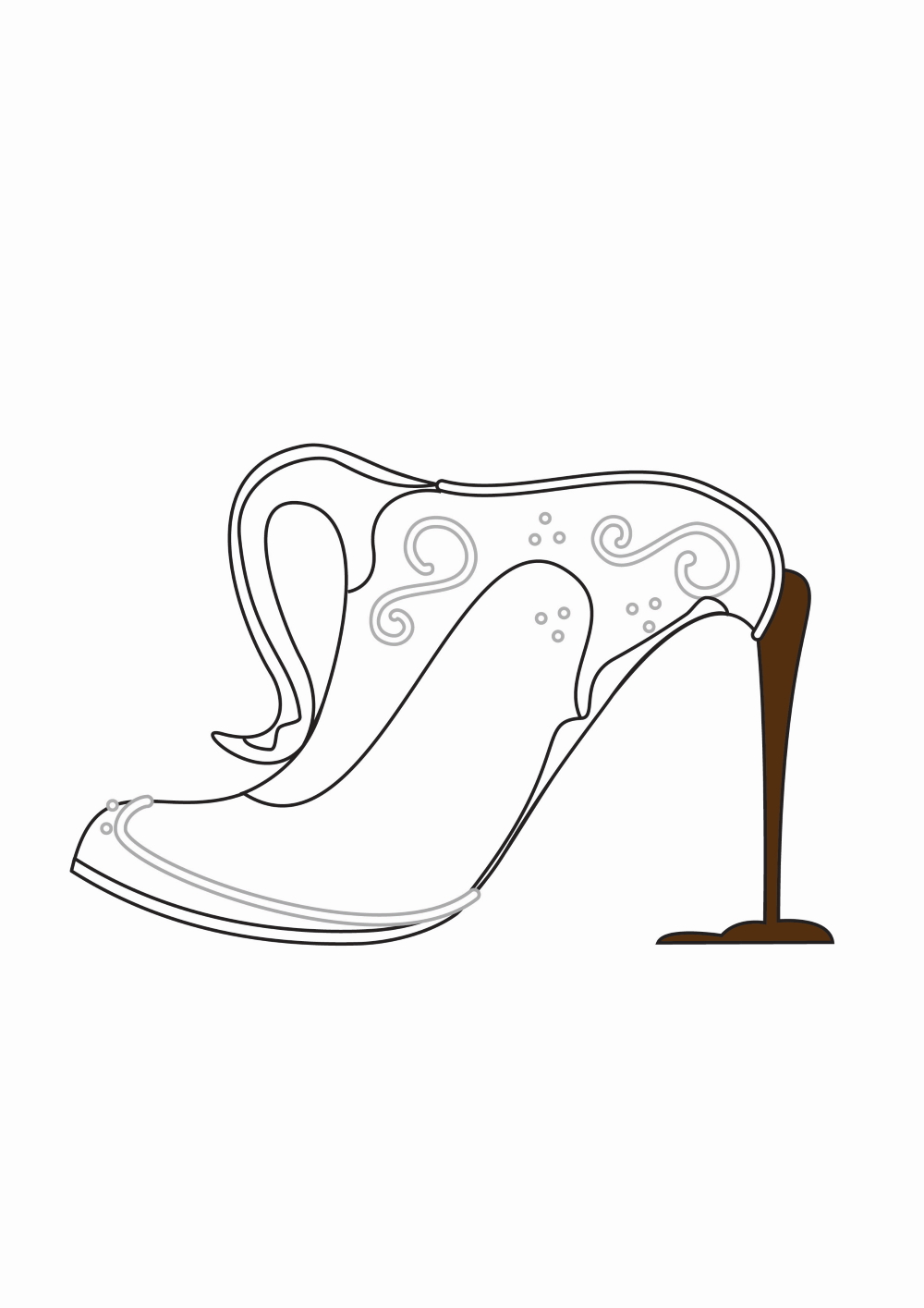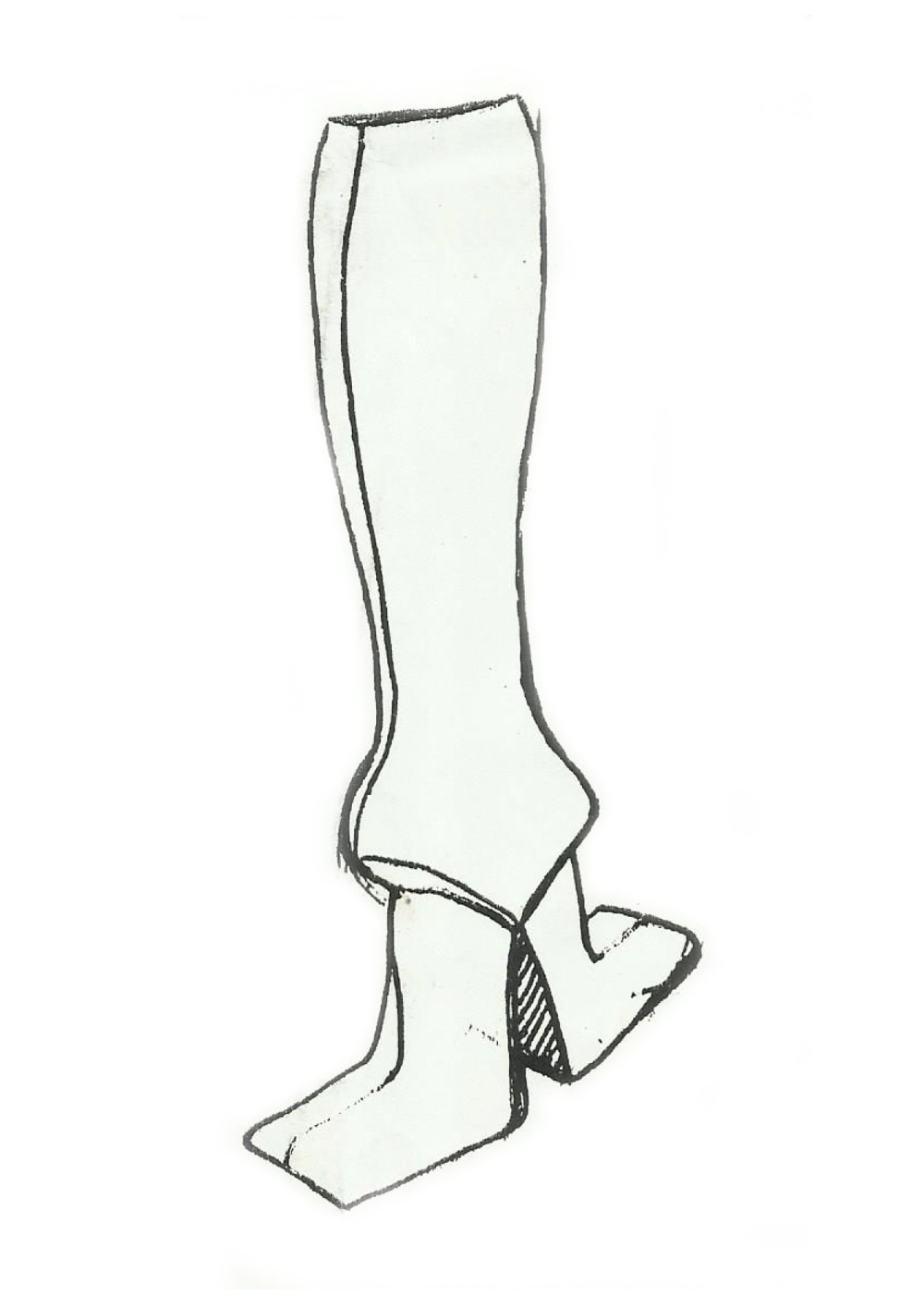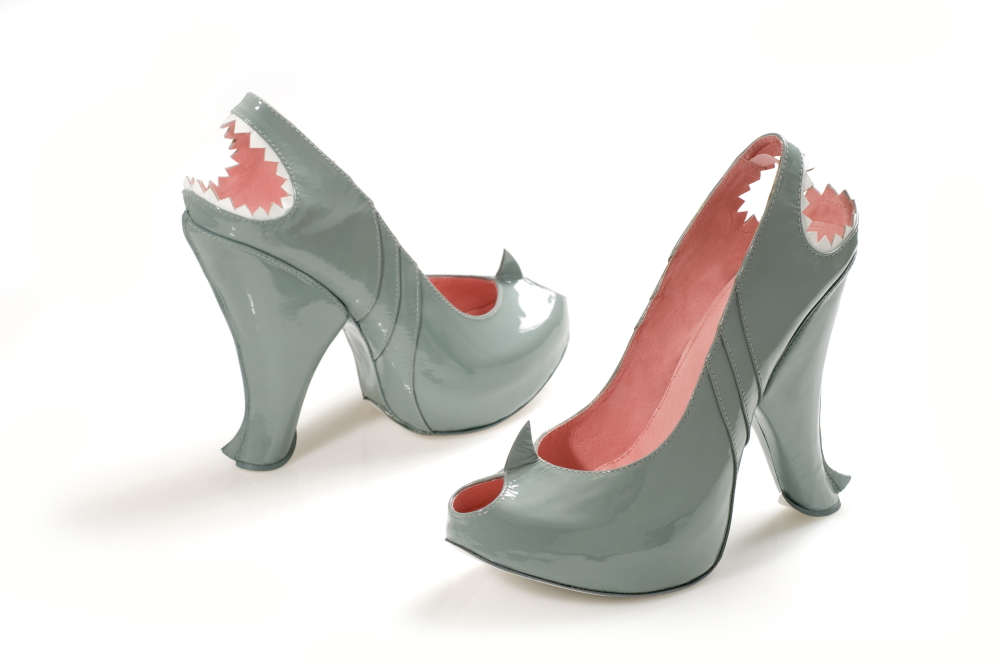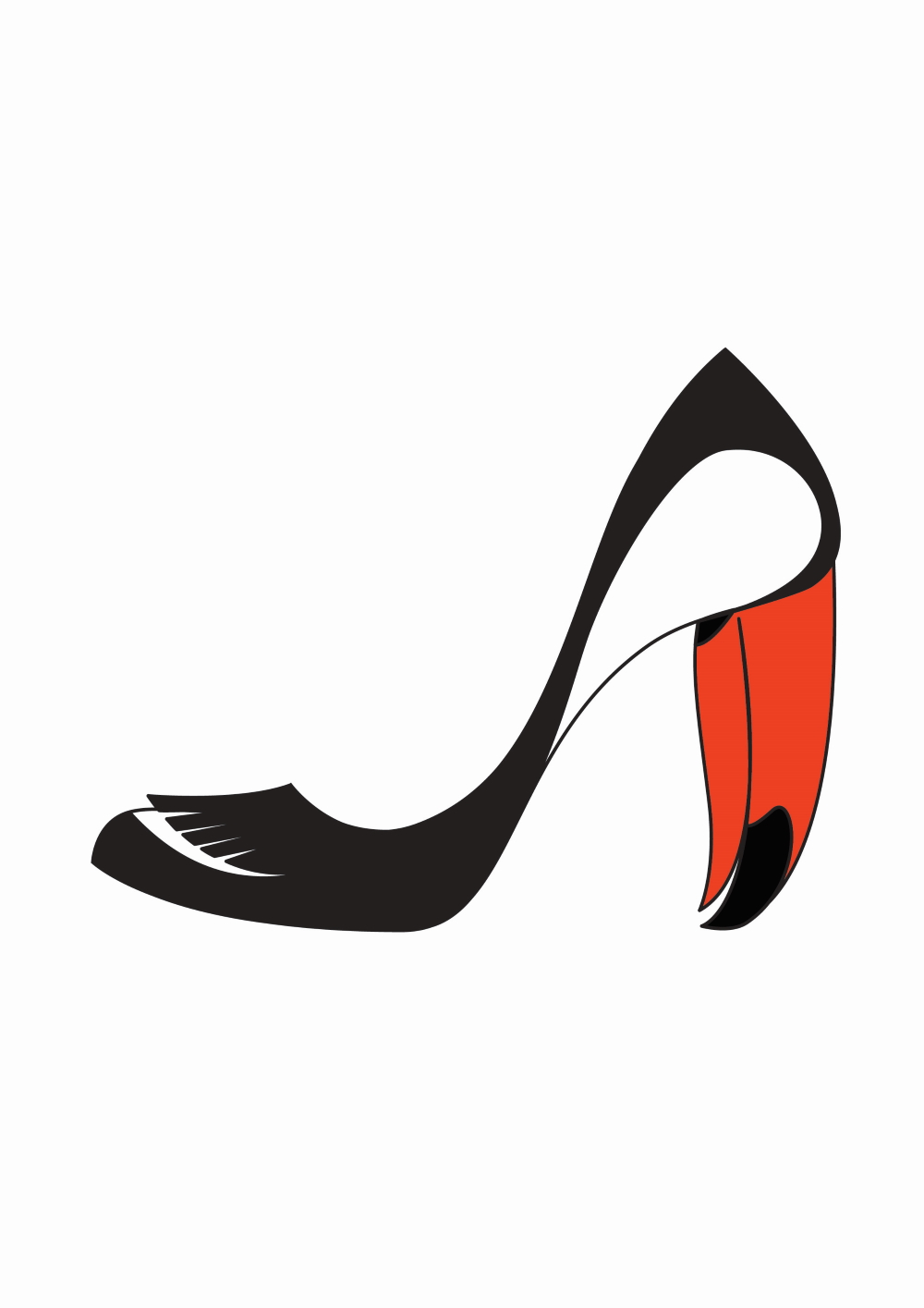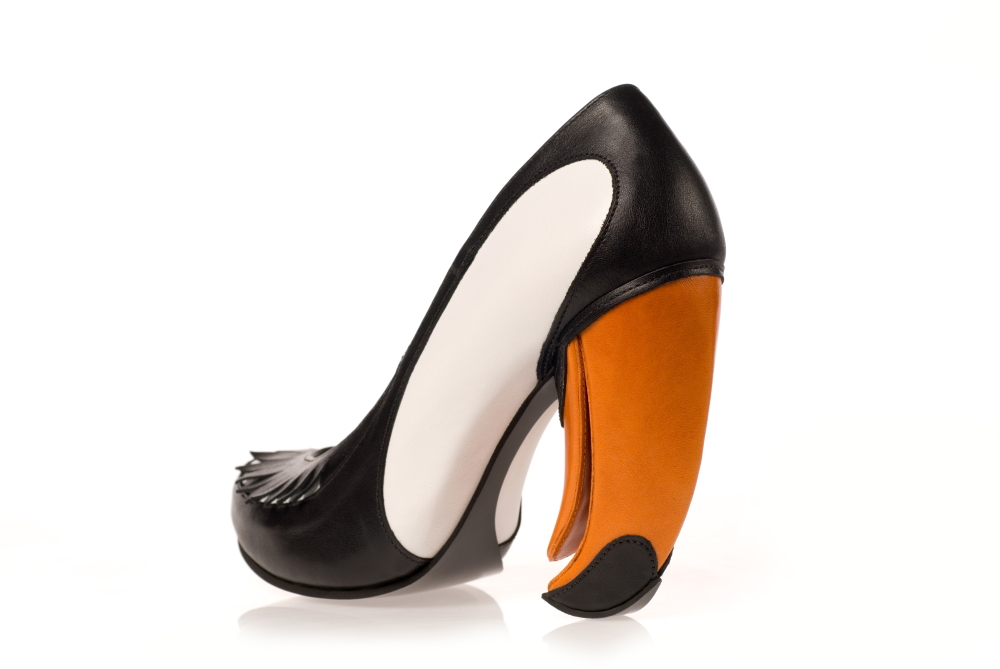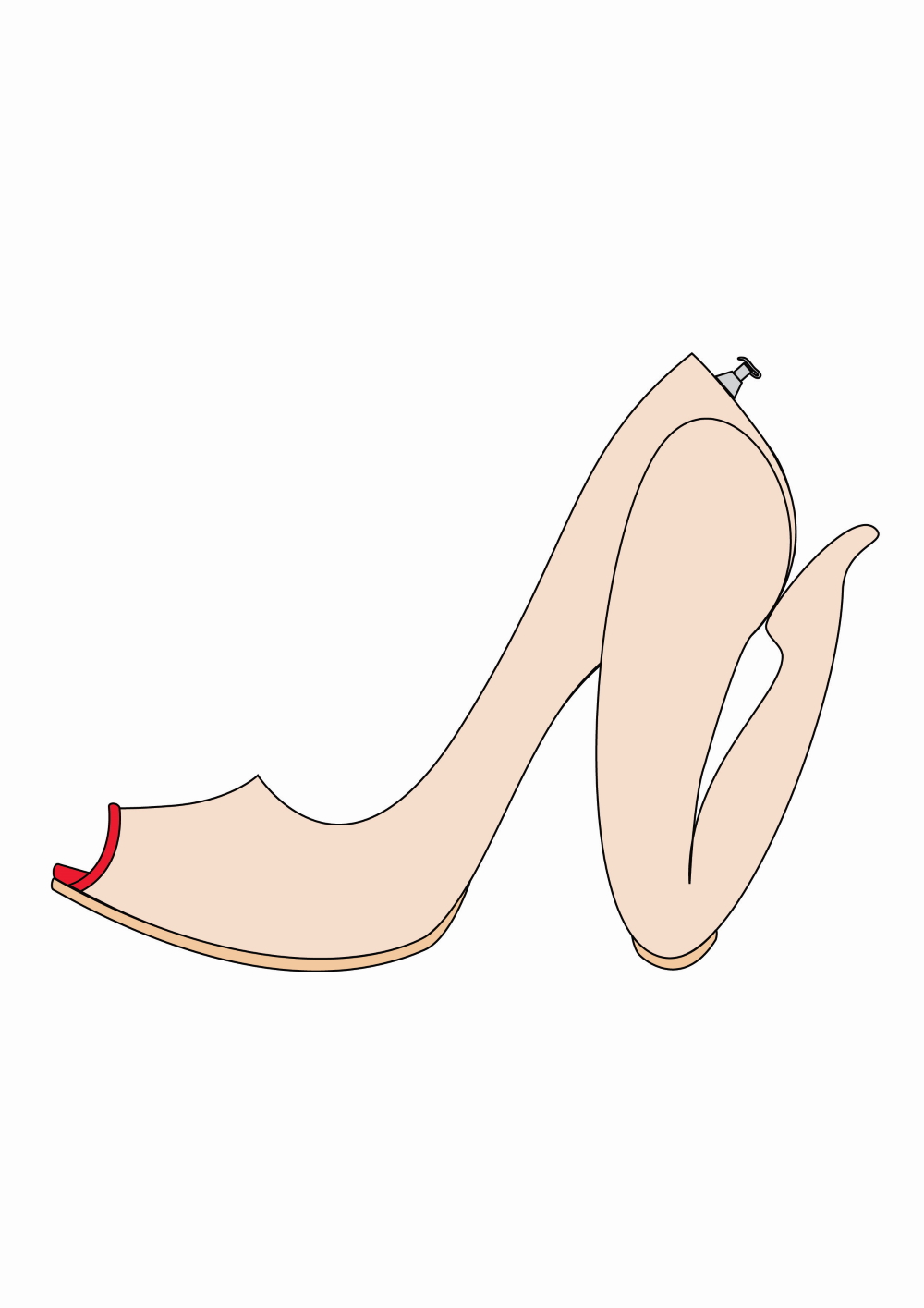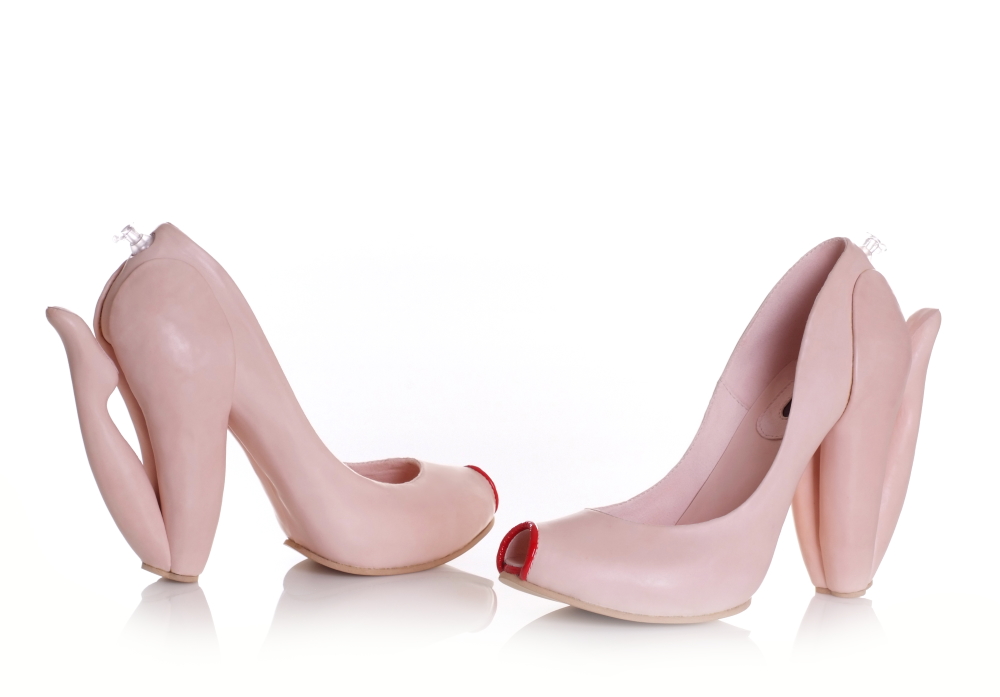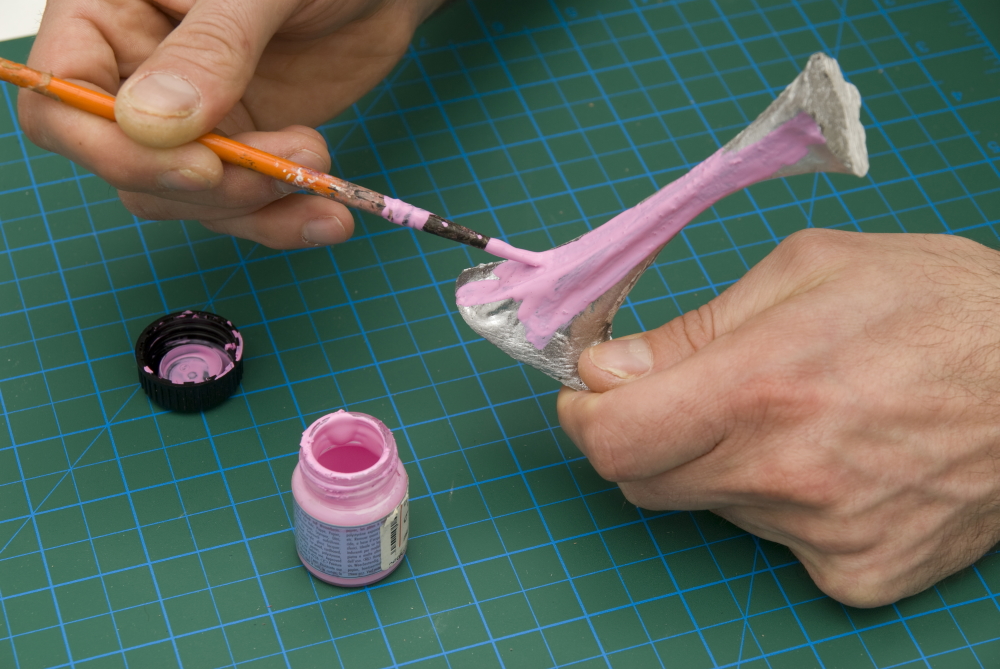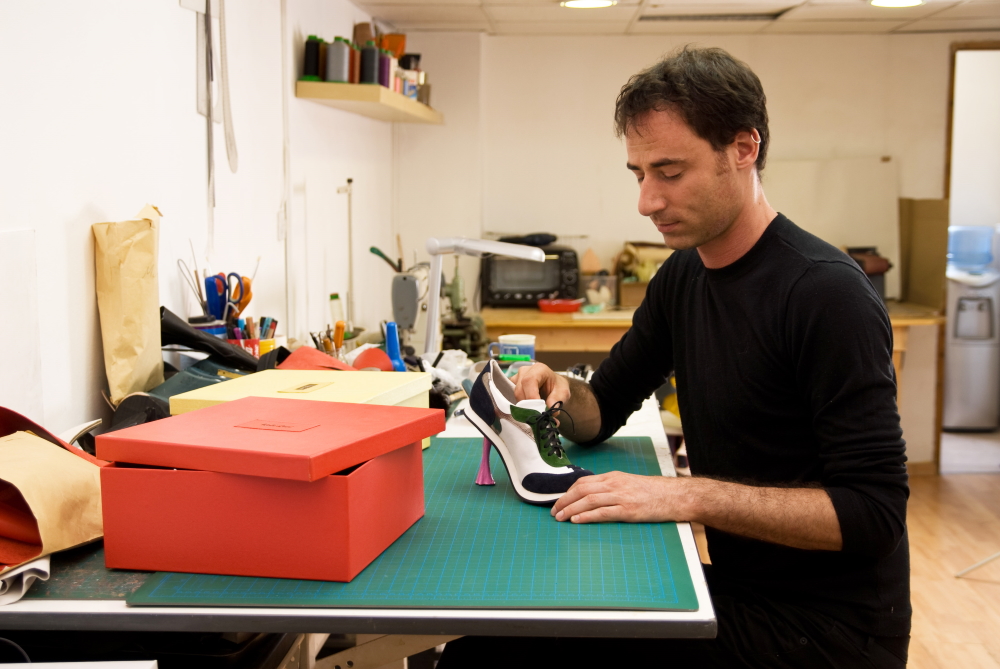Kobi Levi
Shoemaker / Footwear Artist (Lady Gaga's videoclip)
Israel
In the video for the global hit 'Born This Way', Lady Gaga wears a pair of boots made by him! Actress Whoopi Goldberg ('The Color Of Purple') is even one of the collectors of his shoe creations and shows off the latest, always sensational achievements on her daily US TV talk show 'The View' (ABC)! We are talking about the curiously extravagant "wearable sculptures" (CNN) by Israeli designer Kobi Levi. In addition to Lady Gaga's "double boots" with space for toes at the front and back, he also has heels whose heel design is based on the leg position of a flamingo, stork or ostrich. But the repertoire also includes very flat ones, such as the folded banana skin to slip into. All these are examples from a unique collection that is an expression of the designer's impressive creativity and exuberant imagination.
Kobi Levi
Shoemaker / Footwear Artist (Lady Gaga's videoclip)
Israel

Already in his school days, Kobi Levi (*16 January 1975), who comes from an artistic family (grandfather: graphic designer, mother: fashion designer in private life), designed special 'kicks' - at that time still made of cardboard boxes. In 2001, he completed his studies at the renowned Bezalel Academy of Arts and Design in Jerusalem with a focus on shoe design and development. At the same time, the 'avant-garde shoemaker', who learned his craft solidly from old cobblers, sketched his own designs and realised them as individual pieces. Photos of these first saw the light of day on Levi's internet blog in April 2010. This brought him positive feedback and a rapidly growing word of mouth. Lady Gaga's talent scouts took notice and international publicity was guaranteed at the latest after the presence of his products in her clip. It was further pushed by features in magazines like Elle, Marie Claire, Glamour & Co. and so in July 2011 he finally opened a studio in his hometown Tel Aviv. There, the self-proclaimed "footwear artist" works on creations that represent the artistic-unorthodox, free-spirited counter-design to the exclusive yet conventional shoe fashion world of Manolo Blahnik, Christian Louboutin, Jimmy Choo or Stuart Weitzmann.
Kobi Levi's abstract creations are often inspired by observations of everyday life or animals. The unique shoes are a fusion of design, art, elegance, originality, functionality and wearing comfort. A prototype of each new idea is first produced to test suitability and stability in practical use. If the test series is successful, 20 pairs per model are handmade from high-quality materials. The retail prices of the extraordinary one-of-a-kind boots, high heels, peep toes, pumps or stilettos, which take two to three weeks to make, range from 800 to 3,000 US dollars.
Kobi Levi, who after years of focusing on footwear for women is gradually expanding his portfolio to include shoes for men as well, lives in Tel Aviv with his wife and daughter.
Interview October 2015
Unique art form: shoes as „wearable sculptures“
ABOUT INTUITION & INSPIRATION
The Romanian-French sculptor Constantin Brancusi said about his creation process: “Things are not difficult to make. What is difficult is, putting yourself in the state of mind to make them.“ Before the creativity, there is intuition. Where does this intuition come from, what sparks it? How does it manifest itself – is it only a vague idea or tangible (for example, in pictures?)
It is true, for me there is always a certain urge to create, and various triggers bring me to start working on a new piece. Sometimes it is a vague idea that stays in my mind until I feel it is time to start sketching and see if it works. Or, I can choose a theme I want to explore, and then start to look for inspirations and images to design with, that will bring the idea to life. Bring yourself to start is a major step, and when starting the process just keeps going until you achieve the desirable piece, it is difficult for me to stop in the middle.
Is the timeframe of intuition only temporary or can it be supported by external factors?
Both, as mentioned above. It can be something from within, or, I can get ideas from interactions with others, in a simple conversation or in collaboration.
Is intuition reliant on spontaneity or is it possible to engage this spiritual resource at any time, consciously? If yes, how?
Both options are there - see my answer to your first question. The constant urge to create is there, and creations will come up whether needed for a certain specific time and/or just because the idea is there waiting to „be born“.
How important is the own physical constitution? Is it true that sadness equals creativity (or vice versa?) To quote the writer Miller Williams: „the saddest joys are the richest ones“ …
Well, there is something to it, but I feel that different states of mind bring different creations. I feel inspired both in an optimistic state of mind as well as when I’m a bit sad for some reason- I’m thinking about life in different ways, from different perspectives, and that will give a different “touch” to the creation.
Do calm and relaxation further the „best“ or is a tight deadline a stimulant for creativity?
I think a professional designer can work in both situations. Sometimes a deadline is forcing you to “move” and create and not linger. It also makes you be very decisive. A relaxed timeline can give you the option to try more variations and go into more levels and details.
Which place/what environment is best for the creation/work process?
I think about new ideas in any situation, but to realize it, I prefer to be concentrated and work in my studio.
What, if there is a deadline, but no intuition?
For me, when I have a project with a deadline - the trigger itself brings the intuition, I like the challenge.
Before intuition, is inspiration the primary catalyst? If so, what inspires you?
Both can start the process and the other factor will follow, and both are important. I get inspiration from life around me... nature, objects, daily situations, people... I show these themes in a different way, from my own point of view.
According to Philip Roth, “amateurs wait for inspiration while professionals sit down and work.” How do you feel about that?
Professionals don‘t wait, simple as that. Inspiration can come or you actively „bring it.“
How do you separate the good from the bad? How do you know, which ideas to explore further, which ones are maybe even ahead of their time, visionary ideas and which are not?
When I’m curious about something I start to explore it. I can see, if it’ll work or not during the process. Then modify and edit, what’s needed, and if it does not come to it, cancel it. But I must try, cannot leave the curiosity... I need to “get it out of my system”.
What key characteristic does the idea need to be viable?
Originality, humour, aesthetics, significance.
Do you write down an idea right away, because you might forget?
If it is good, I don’t forget it. That is, what I hope will happen, when people see the complete final piece.
Do you feel, if an idea has the potential to be something big?
Yes, usually the way, I feel about it, is the way people will feel about it too. I will never make a design I think is not great.
How long do you ponder an idea before creatively working on it?
It changes, with each idea it is different. Sometimes it’s immediately and in other times it takes more thinking to decide, if it is good enough to start working.
ABOUT CREATIVITY
According to novel-price-awarded author Nelly Sachs “everything starts with yearning.” Do you agree?
I agree with the yearning part, but not always at the start. An idea can simply “pop up” in my mind and then I cannot wait to work on it and see it complete. There is a permanent yearning to create, and there is the yearning to complete an idea to become reality.
Is it magic and fun or torture/blood, sweat & tears to be creative?
All together – yes, it is possible! You always like to make things the best possible - design accurately, develop and make the pieces perfectly. It is the passion and the purpose that keeps you motivated and focused, but there is a lot of stress and frustration on the way to get there.
What is the process like from theory/idea to a practical creation?
It is a very challenging journey. After deciding whether an idea is interesting to create, I start with sketching from different angles. If I like what I see, I continue to 3D-model, choosing tooling and make a test-shoe. I modify and adjust everything needed and then choose the materials for the first complete pair. Each step has a lot of “mini steps” in it... If all goes well, the complete pair looks “natural” like “it was born this way” and you don’t see or feel all the effort, just see and feel the idea.
Can you force creativity? Are „drive“ and efficiency counterproductive?
I think drive and efficiency help a lot, and even help you to keep creating more ideas. If you are a creative person, you never really force it, but you can decide to create in a time frame if needed. The first stages in such a case are difficult as you stare in a blank page... and you must start as soon as possible... but it happens.
How do you stimulate your creativity/are there specific rituals therefore or a muse?
I try to look at ordinary things in a creative way, find the beauty in them and show them in a new light. The more I explore, travel, see/hear other creations, study, the more I get further ideas, completely new ones and also taking previous inspirations and design with them in a new way.
When you are in a creative phase, are you working as if in trance?
Yes & no. The drive to start creating is like a trance... but the actual making process it is very calculated and “down to earth”.
Which is better for creativity: discipline and structured time-management or idleness?
For me it is discipline and efficient time management... especially when I develop and make the shoes. I think about new designs all the time... I cannot turn it off, it is just there.
Do age and life experience help with creativity or is a younger mind more creative, because it is fresh and untouched by experience? Does age equal more creativity? What about social/cultural heritage?
The “spark” started for me, when I was younger, and experience makes you more professional and you can manage yourself and your talent, and also keep your artistic sense alive. I think, if you are a creative person in all your heart, it won’t be “just a phase” - then life will turn it off... A real creative person will organize life around/with the creativeness, so they can “live together”.
How important is talent for creativity? Is art of any kind based on talent?
It is the best “tool” to show your ideas if you can realise them, and for this talent is essential. Creativity and talent together are strength. Art is a combination of the two... a visual (or music etc. ...) expression of an idea, a concept. Just an aesthetic piece with no originality or vision is not as strong, and a good idea that is not presented the right way to express it, can damage or even ruin the effect and the meaning behind it.
Do you archive certain ideas to maybe check back when you are in a less creative phase?
I do archive to re-check... just to see for myself, how I feel about them later. But so far there are more and more ideas “waiting in line to be made”.
Did you ever revisit an older idea, that you thought would be worthless but it turned out to be great/good? If so, why do you think that is?
As mention, I revisit inspirations and themes and create new ides/designs with them. Sometimes I can “get stuck“ and put the process on hold so I can keep thinking about how to improve what I don’t like. An idea needs to be good and make me curious to start working, if a „worthless“ feeling is anywhere near, I don’t even start.
Is it better to be creative on your own, only trust your own instinct, or in a team? However, in a team - how much of your own, personal idea is really left afterwards?
I like both. When working on my own, I listen to my instincts and follow my passion and judgment in an absolute way. In a team there is an interesting discussion, brain storming, and new things are being created that won’t happen otherwise. I think that in a team you have to really work together and not think “me in a team”, this can cause bad dynamics... it is important that all members are interested in the teamwork and collaboration first.
Is it true talent to trust other people to fill the gaps of your own deficits/ lack in creativity to produce something significant/great?
Yes, it is difficult too. The only way to do it is to work with a team that is passionate about it and it is important to each person to make the best work to achieve the best result, and listen to one another - no hierarchy, everyone is important.
Who’s leading in the creativity-process: craftsmanship or spontaneous intuition/inspiration?
Both.
Which roles play aspects such as sincerity, authenticity, self-doubt when it comes to creativity and are they useful for the creative process?
They are all part of the game... and they help to create the idea and force you to take a second look and always want to make it better.
If you would make a pie chart: How are emotion, mind and commercial interests split in percentages when it comes to the creative process?
It depends on the goal, the purpose of your creation, and where you want to see it after complete.
Which is better in a developmental process: speed, meaning to grasp the magic of the moment, or a slow, ripening process when it comes to implementation and elaboration?
The more experienced you are, the more you understand yourself and your ideas better and know how to create them. You have to take the needed time to create it the best, but not linger for no reason. A complete piece gives the best feeling - I got addicted to it! And it motivates me to create more.
What is the individual satisfaction based on: a) self-realization and individual fulfilment, b) the (artistic) recognition or c) commercial success?
All of the above, but the main one will be according to your initial reason/purpose of the specific creation. For example, if you design a commercial product, it needs to be unique and well made, but if it won’t sell it will be cancelled, meaning it’ll be a failure even though the design can be appreciated and praised. And on the other hand, you don’t want to sell a design you are not proud of being a good creation but sell well... All aspects are important.
What is your personal motivation for creative activity?
It simply makes me happy; it is a part of who I am and not what I just decided to do. I cannot imagine not creating... it’ll be so empty...
What role does perfection play when it comes to creativity? Is a completely perfect opus soulless?
Well, the idea needs to be realized the best way to communicate and bring to life what was an idea, a thought. The soul is in the idea and the better it is made, the better it moves the viewers.
How much does routine influence creativity?
For me it is not a factor, I get ideas in routine times as well as when I travel or when other changes happen.
Can experience and professionalism make up for lack of creativity? And if so - how much?
No, a well-made piece can be impressive, but without creativity it won‘t be that interesting! A professional will be impressed by a well-made piece, as he/she relates to this aspect, but a well-made, creative piece will communicate and move all kinds of people.
Which role does workmanship play in creativity? Can it be an obstacle?
It upgrades the final result and shows the creativity, it is a great tool to have.
How is it possible to stay true to yourself artistically, but stay innovative at the same time? Can you keep re-inventing yourself without renouncing/denying your style?
Yes, definitely. Your style and creativity are your DNA, and it can be shown in different ways. Your way of thinking will create the connecting line between all your creations - your own “hand writing”. Creativity is not a “lucky guess”, it is a combination of passion and understanding yourself and what you are doing with it.
Is it desirable to be ahead of your time or does it cause to be misunderstood (or not understood at all)?
I like to create and design in a new original way - “find” the designs from a different direction, and have both familiar and new aspects in the end result. For me it is desirable to have my own signature design/style that will be known as mine and be associated with me.
Are creative people especially sensitive, because they have a particular feeling?
Each one is different, but all care, sensitive and passionate about their creations.
When does the time come to end the creative process, to set the finalized work free - or is there a never-ending possibility of improvement?
For me when the idea is clear to others and I get the reaction I want, it means it is complete. I myself will always want to improve, but I don’t let perfectionism to block me, but to motivate me.
ABOUT SUCCESS
Is there a rule for successful artistic work, an individual prototype for success? In short: Is success projectable?
I think it start with communication: If people react to what you do, your work will succeed as it becomes part of other people’s life and not just of the life of who creates it.
When something is successful, how big is the temptation to recycle it, to repeat the successful prototype and not develop further?
Well, it is good to want to succeed again, but it must be with new creations. For this the success and what caused it need to be understood, then work on a new fresh creation to achieve the right feeling and effect.
How big of a role does coincidence play when it comes to mass reception/popularity? Or: Why is someone successful and someone else is not, even though they are similarly talented?
Again, it is about how the work is being received, and by whom, communication of the creation.
Should you be able to predict characteristics, needs and desires of your potential audience to be successful?
I can estimate, what they look for, and bring it with my design/artistic/creative touch. No one can guaranty success as there are other factors to it than the creation itself: the crowd, time, place, etc. ...
How do you stay open to criticism despite success?
Once the work is out, everyone has the right to their own opinion obviously. I respect all criticism (whether it is a good or bad one) as long as it respects the work. Each person brings their own point of view as they react to my creations and it is interesting to see/hear it, whether it is, what I intended to say or not.
Do you have to be driven, do you have to be addicted to achieve the next time, what didn’t work this time?
You have to have drive. Otherwise, what will keep you working? The drive is to create whether things did or didn’t work, you still want to continue to the next creation. Failure either/or success shall not stop you from continuing!
Did you ever deliver something that you thought was mediocre – but was successful?
No, I can’t deliver something I don’t like and be proud of. It has to be good for its purpose and still be interesting.
How big is the fear of failure, that a successful run might end and what follows is the fall?
For me success starts, when I complete a creation the way I wanted to. Then there is how it being received. Usually if I’m happy with it meaning, the same will happen later as I’m more “strict” with the result than others. It also depends, what you consider failure and success. Going back to previous answers of what is the purpose of the creations: I started to create my artistic shoe-creation for the sake of creation, all the rest followed.
In your mind, what is the reason for being successful over a long series of time and all of a sudden the success is gone? Is this a matter of the contemporary taste and different times or is it just a natural development that once one is on top for some time, there’s only one way - down?
I think that if the motivation and passion is gone, and you create just for other purposes than the creation itself, then these reasons will determine the future: If it is commercial products, sales are “the boss”; if it is acceptance, so criticism will rule it...
How do you deal with failure? Is it important to have perseverance, because success might come later on?
Yes, you have to be your own critic as well. If something is not well received, or just received differently than intended, you have to analyze and understand, why and learn from it.
How do you deal with a moment, where your individual, perfect work has been created, maybe has been praised and nominated with all possible awards – what will be next? Or is the personal peak also “the end”?
For me a “peak point” is, when my work is being received, appreciated and known to a big crowd. At this point I know I have an audience and my work is part of a dialog, and I find it interesting and motivating. It is not an end but a new phase, another step to create in.
If this is a possibility – is it even desirable to create the ultimate, perfect work?
You want each work to be perfect for what it is, but it is not just one thing, as your creativity is a way of thinking and seeing life and it can be expressed in various “perfect” ways. There is not only one correct answer, that’s the beauty of it.
MY FAVORITE WORK
“When I think about the designs that represent my work the best, I choose the ones that show my design-approach in the most distinct way. I find inspirations all around me and “see the designs” in images and situations. I blend the image/inspiration to become the shoe, for all its parts. The shoe becomes a new creature come to life. I like to create glamorous shoes with a sense of humour.
I chose a few examples: “Chewing-Gum”- freezing a daily situation to create the design, “Coffee” – surprising image to find inspiration in, and in this way, and “Miao”- finding the perfect shoe silhouette in this iconic image. All three capture movement to bring life to a still object.


